Compensation Exceeds Levels in Most Other States – in All Other States in Many Years
A conventional notion has taken hold that Connecticut’s dangerously underfunded active and retired state employee health care and pension benefits are the result of past decades of under-funding. True, but that’s a half-truth.
The other half of the truth is that state employee wages and benefits are outrageously generous. The average private citizen in the state earns significantly less and enjoys meager benefits in comparison. That’s unfair in and of itself, but private citizens are hard pressed to fund such generous compensation with their significantly lower private sector compensation. That’s both an additional unfairness and an almost unbearable burden which contributes to ongoing under-funding.
In 2010, under Governor Jodi Rell, a special commission, the Commission on Enhancing Agency Outcomes, found that average state employee compensation far exceeded average private sector employee compensation, based upon 2008 data:
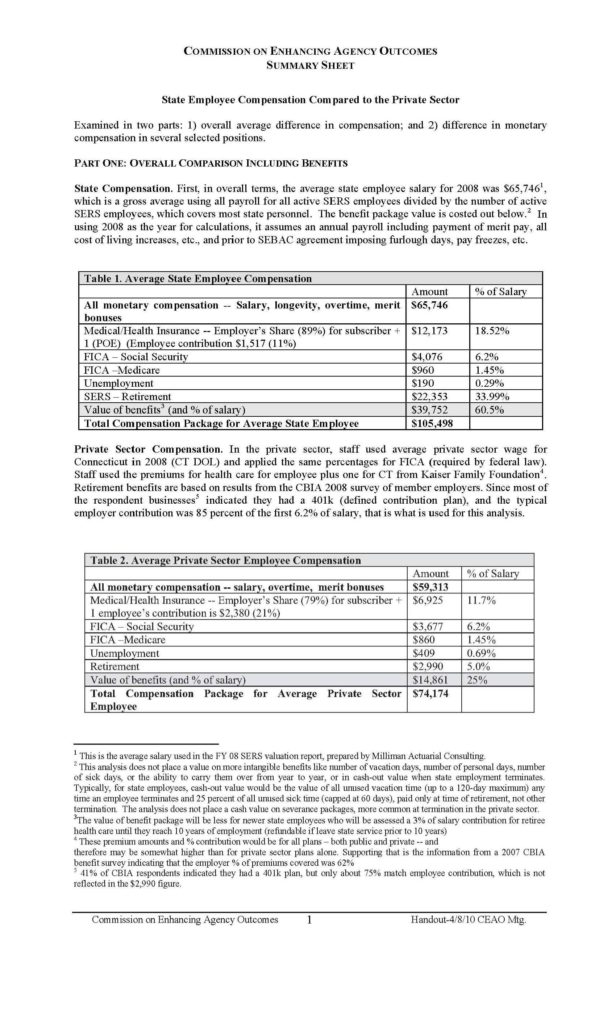
Incoming Governor Dan Malloy had to have known this, or should have known it. Yet, in 2011, he struck a deal with state employee unions, the so-called SEBAC 2011 Agreement, which increased wages and extended gold-plated benefits.
In 2014, the American Enterprise Institute looked at state employee compensation in the fifty states, using data over the period of 2009-2012. Connecticut was the only state in which state employee wages exceeded private sector wages:
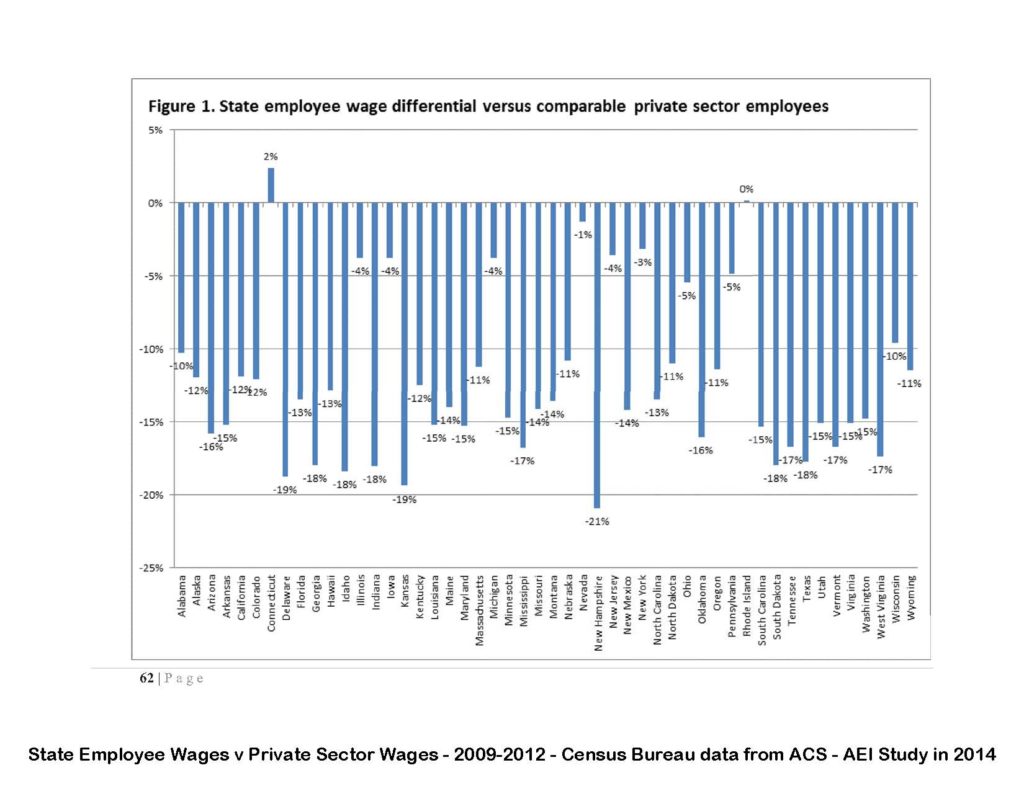
The AEI study found that average total compensation (wages and benefits) of Connecticut state employees exceeded average total compensation of private sector workers by the greatest margin among the 50 states:
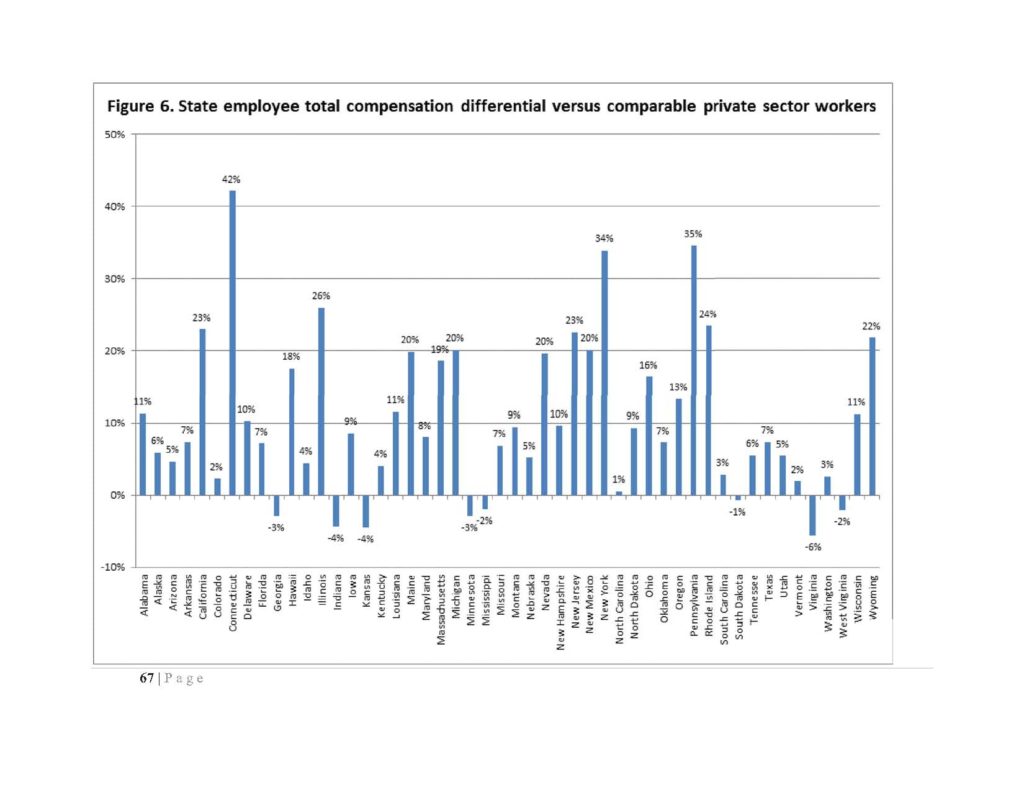
It should be noted that pension and benefit analysts debate various aspects of methodology on an ongoing basis. Often defenders of public employees deflect findings that public sector compensation is excessive, unfair and unaffordable by criticizing the methodology utilized in the studies which reveal this reality. However, regardless of the methodology utilized, a 50-state study, such as the AEI study, compares the states on a level playing field. To suggest that AEI was somehow biased against Connecticut is an absurd proposition.
Little, if anything changed under Dan Malloy. Indeed, in 2017 he struck another deal with the unions, SEBAC 2017, which extended the gold-plated benefits another five years.
In 2019 AEI conducted another 50-state study, looking at the most recent available information, data for 2017. This time AEI looked at both state and local public employees and used somewhat different methods. Connecticut public employees continued to outpace their private sector counterparts.
While the AEI study showed this, its finding were not as conclusive for the state’s employees for four reasons. First, we don’t know whether local public employees in Connecticut, or in various other states, earned more or less than state employees.
Second, while Connecticut public employees lost the leadership position to a few other states, that loss is relative to other states, which is interesting but not as important as their position relative to Connecticut private sector employees.
Third, inevitably 2017 data understates Connecticut state employee wages, since for the period 2015 through 2017, state employee wages were frozen, before two back-loaded hefty 5% increases taking effect in 2018 and 2019.
Fourth, Connecticut’s problem has been transforming into mostly a retiree problem. Already retired state employees clearly outnumber active employees, and, by 2022, retirees will outnumber active employees by a huge margin.
Here’s the main table from the 2019 AEI study, which shows that, among other things, this gross disparity between public and private compensation developed over the last two decades, despite many observers referring to the problem as a “legacy problem”:
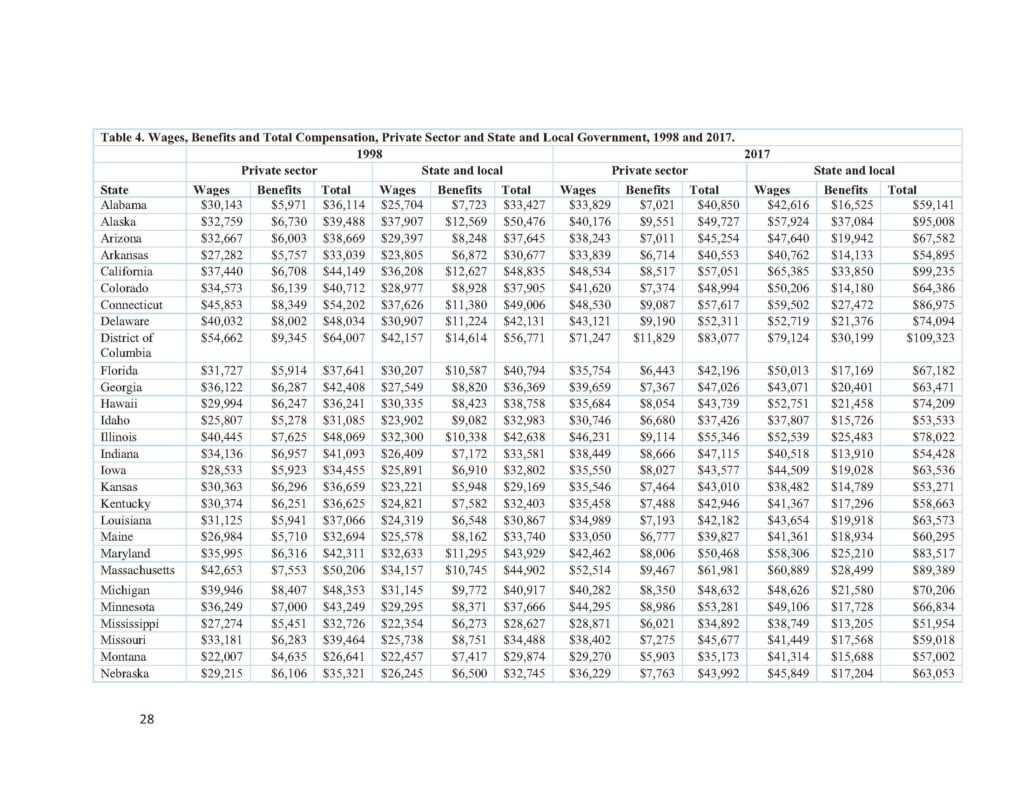
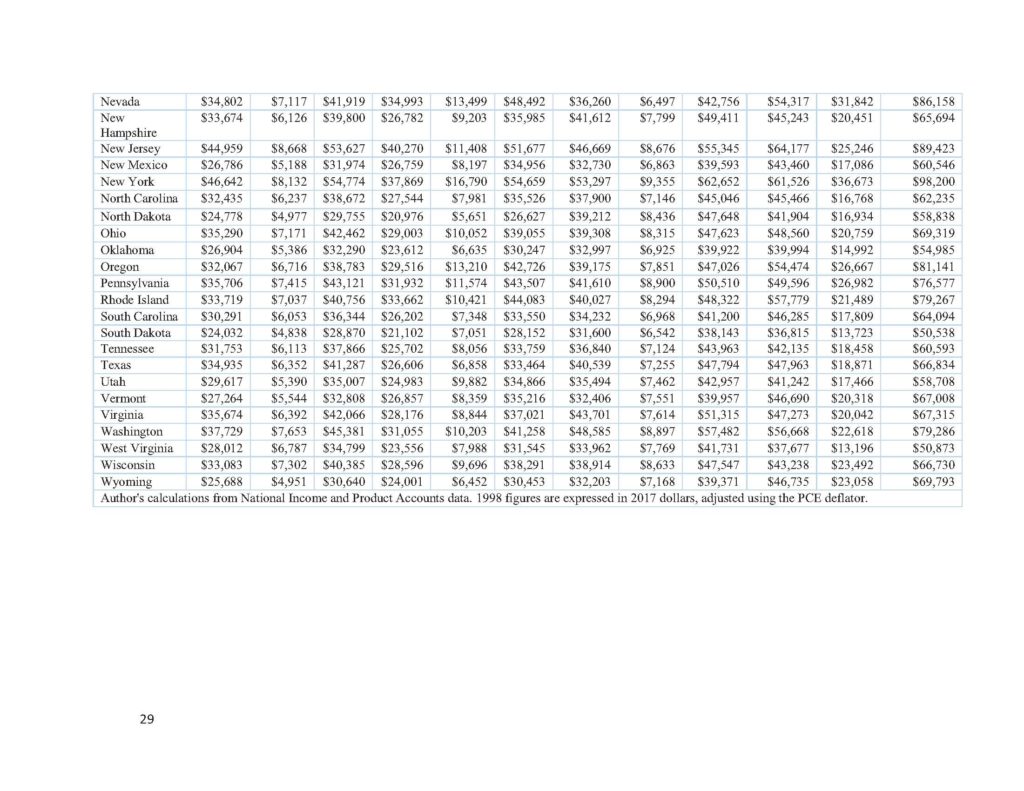
![]()

